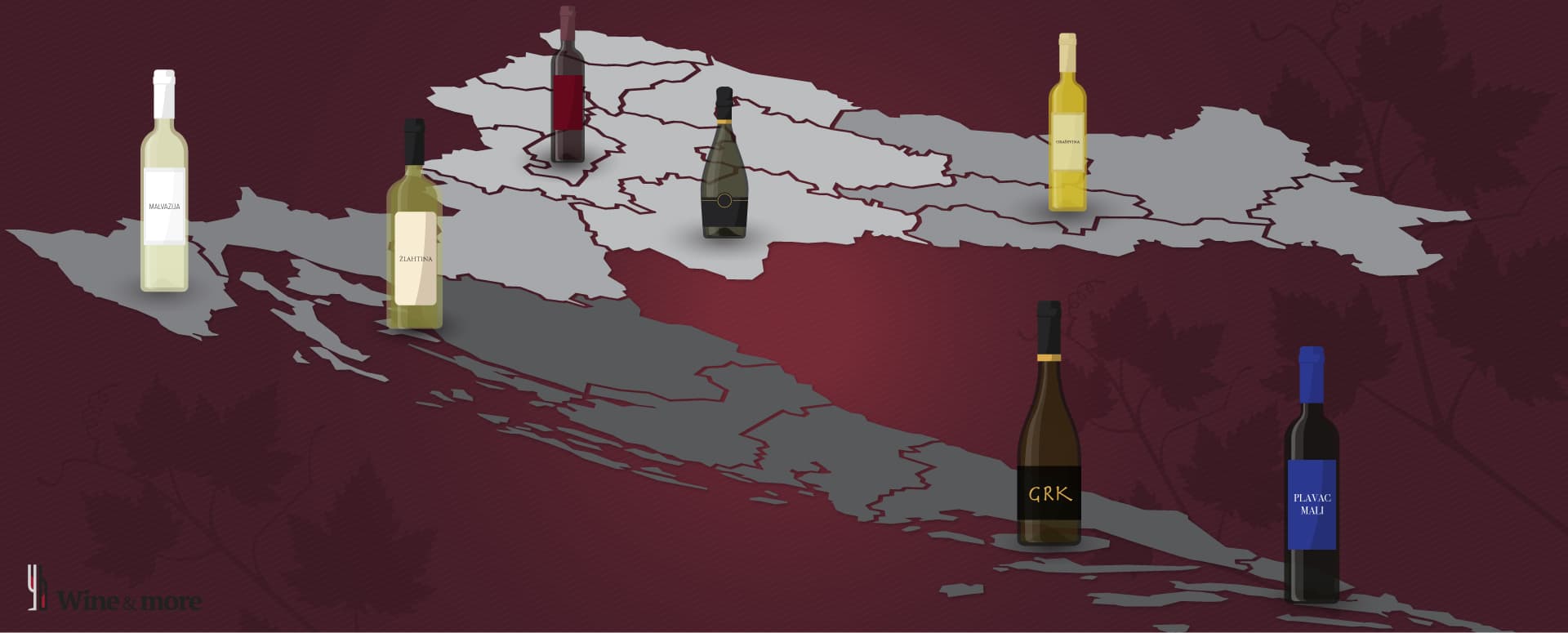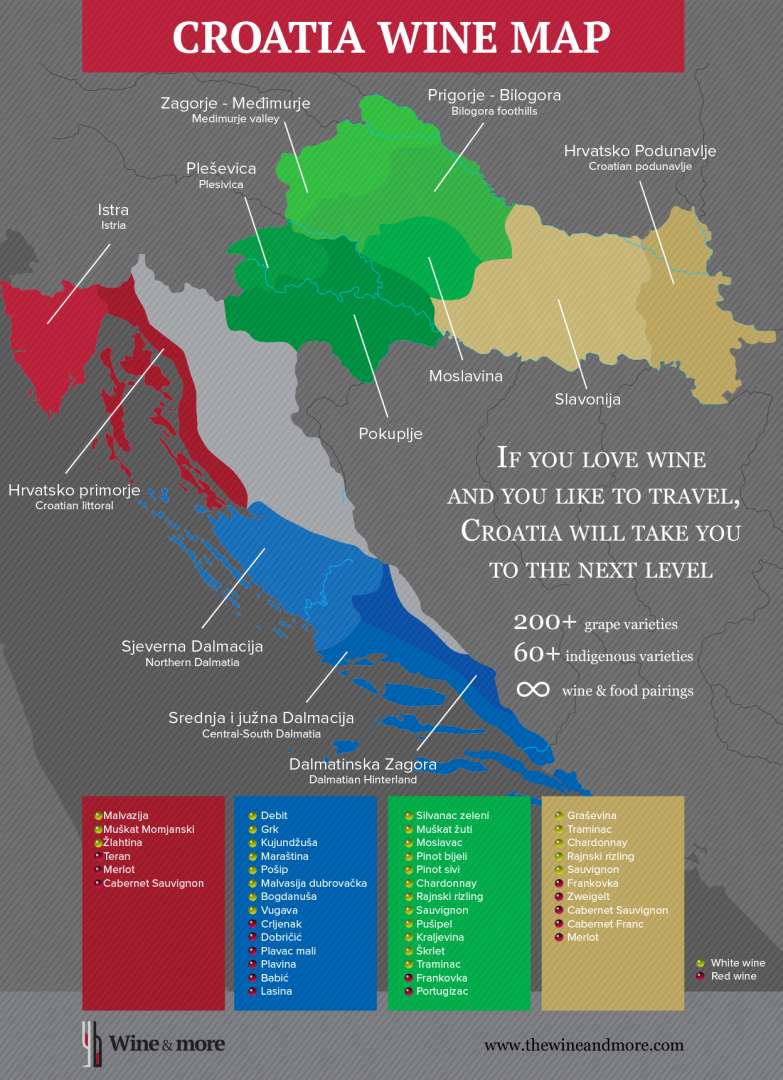Croatian Wine Map – Wine Regions of Croatia
Croatia is a small country but a land of diversity and its geographical rough division into the continental and coastal parts can also be applied to winemaking. The continental region produces rich fruity white wines, similar in style to the neighboring countries – Slovenia, Austria, and Hungary.

On the north coast, Istrian wines are similar to those produced in neighboring Italy, while further south production is more towards big Mediterranean-style reds.
On the islands and the Dalmatian coast, local grape varieties, microclimates and the rather harsh nature of the vineyards lead to some highly individual wines and some of Croatia’s best known such as plavac mali.
Each of the main regions can be divided into sub-regions: Wine&More has identified 12 regions that have significant wine production and are home of high-quality wines, as the wine map of Croatia below shows:

As a general rule, white wine is dominant in the continental region and Istria. The most popular variety in the far Northern Eastern, Slavonia region is graševina (welschriesling) accompanied by a range of ‘international’ varieties such as chardonnay, traminac (gewürztraminer), sauvignon, pinot gris and rhein riesling. The Slavonian climate is cold continental and Slavonian wines are dry, fresh and lightly aromatic.
The area of Pleševica is situated more to the West and is small but most definitely one of the most important spots on the Croatian wine map. It lies 30 km Southwest from the capital, Zagreb, and grows mostly chardonnay, graševina, pinot blanc, Gewurztraminer, Riesling and portugizac – the Croatian version of Beaujolais. It has a continental climate but a lot of sun which makes it a home of some of the best Croatian sparkling wines, some of them made in the traditional, champagne way of making sparkling wine.
Although Istria is often called ‘the Croatian Tuscany’ and its landscape does resemble the Tuscan one, white wine and not red is what you should drink in Istria. The most popular Istrian wine is malvazija (malvasia) but you can also enjoy the taste of teran (terrano), muškat (muscat), cabernet sauvignon or merlot. When in Istria you shouldn’t miss the opportunity to go on a wine tour and enjoy not only high quality wines but the picturesque hills and landscapes.
Many of the Croatian best and most expensive wines are made in Central and South Dalmatia, home of almost all Croatian reds. It is also a birthplace of plavac mali, indigenous Croatian variety which was discovered to a the child of zinfandel (and zinfandel was discovered to be originally Croatian!).
Except for plavac mali you can taste other Croatian native wines in Dalmatia such as babić, bogdanuša, grk or kujudžuša. The Pelješac peninsula is the home of Dingač and Postup, the first Croatian protected wine regions and the Dingač and Postup plavac mali wines are of protected origin.



















